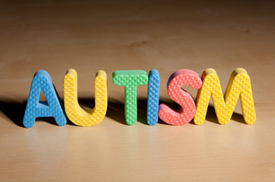
Ever since we began to understand the autistic spectrum, researchers and laypeople alike have been fascinated by the mysteries of the disorder. The fact that high-functioning individuals with Asperger’s syndrome like Dr. Temple Grandinand Daniel Tammethave become public figures speaks to our fascination with what people on the autistic spectrum can achieve outwardly, as well as our desire to empathize with what they struggle with internally.
According to the CDC, approximately 9 in 1,000 children in the United States are diagnosed as being on the autism spectrum each year. [i]They are characterized as having “deficits in social reciprocity and communication, as well as by repetitive behaviors and restricted interests.” [ii]That said, how can we as educators better help them to not only become integrated into our classrooms, but more importantly, help them reap as much benefit as possible from the experiences we provide? What foundational information can we use to start constructing successful strategies for these children?
First, we can try to better understand the nature of autism spectrum disorders (ASD). Recent studies have demonstrated linkages between ASD and auditory processing. Researchers at Vanderbilt University found that while typically developing (TD) children performed on par with ASD children on certain visually-oriented tasks, ASD children experienced greater challenges with auditory tasks. [iii]Likewise, researchers in Haifa, Israel showed that certain abnormal speech patterns directly correlated to ASD, further reinforcing the conclusion that auditory processes in the brain are implicated in those on the autism spectrum. [iv]
Understanding these linkages will not only help us better understand the ASD child’s experience, but it will help researchers and educators develop more effective learning strategies to help them achieve success.
At Scientific Learning, researchers performed a study in 2007 to evaluate how ASD children could benefit from Fast ForWord®, a program that engages and improves reading based on visual as well as auditory input. We were happy to find that developmentally delayed children—specifically those with ASD—“made significant gains in their language ability.” The data suggest that Fast ForWord helped strengthen the foundational skills needed to help these students get more out of their classroom experiences, as well as function better in society. [v]
Nicole Russo led another study of ASD children related to auditory processing. In short she had two groups of ASD children, one who received Fast ForWord training, and a control who did not. Their data showed that the group who received Fast ForWord training showed changes in brainstem response timing, pitch-tracking, and cortical response timing, indicating that the technology may indeed prove to be a useful tool in the future for helping ASD children improve their processing capabilities. [vi]
Overall, our greatest hope for these students is to achieve a better understanding of two pieces of the autism puzzle: the neurology of the disorder, as well as the psychology and emotional struggles that these students deal with every day. I have found that along with reading the research cited above, I have also gained great insights by reading more personal accounts penned by those with ASD. It is in some of those personal writings that I find my greatest inspiration as these individuals work so hard—often with great success—to make themselves understood.
To increase your understanding of ASD, here are a couple of additional readings:
- A new documentary, “Wretches and Jabberers,” directed by Academy Award-winning director Gerardine Wurzburg, recounts the experience of two autistic men and opens our eyes to better understand their world. Here is a recent review.
- Raun K. Kaufman writes his own account of growing up with autism. While he was diagnosed at 18 months, his parents decided to break with traditional treatments and develop their own program for him. Kaufman describes himself as “fully recovered” from autism, and is today the Director of Global Outreach for the Autism Treatment Center of America. Read more about Kaufman and the child-centered Son-Rise Program.
Related Reading:
Improving Reading Comprehension in Children with Autism Spectrum Disorders
Musical Training and Cognitive Abilities
[i]Newschaffer CJ, Croen LA, Daniels J et al. The epidemiology of autism spectrum disorders[PDF]. Annu Rev Public Health. 2007;28:235–58. doi:10.1146/annurev.publhealth.28.021406.144007. PMID 17367287.
[ii]Kwakye L, Foss-Feig J, Cascio C, Stone W, Wallace M. Altered auditory and multisensory temporal processing in autism spectrum disorders. Frontiers in Human Neuroscience. Jan 5, 2011, 4:129. p 1.
[iii]Ibid.
[iv]Bonneh Y, Levanon Y, Dean-Pardo O, Lossos L, and Adini Y. Abnormal speech spectrum and increased pitch variability in young autistic children. Frontiers in Human Neuroscience, Jan 19, 2011, 4:237, p 1.
[v]Scientific Learning Corporation. (2007). Improved Language Skills by Students with Developmental Delays who used Fast ForWord® Products , MAPS for Learning: Educator Reports, 11(12): 1-5.
[vi]Russo, M. Hornickel, J. Nicol, T. Zecker, S. Kraus, N. Biological changes in auditory function following training in children with autism spectrum disorders. Behavioral and Brain Functions. 2010, 6:60.

